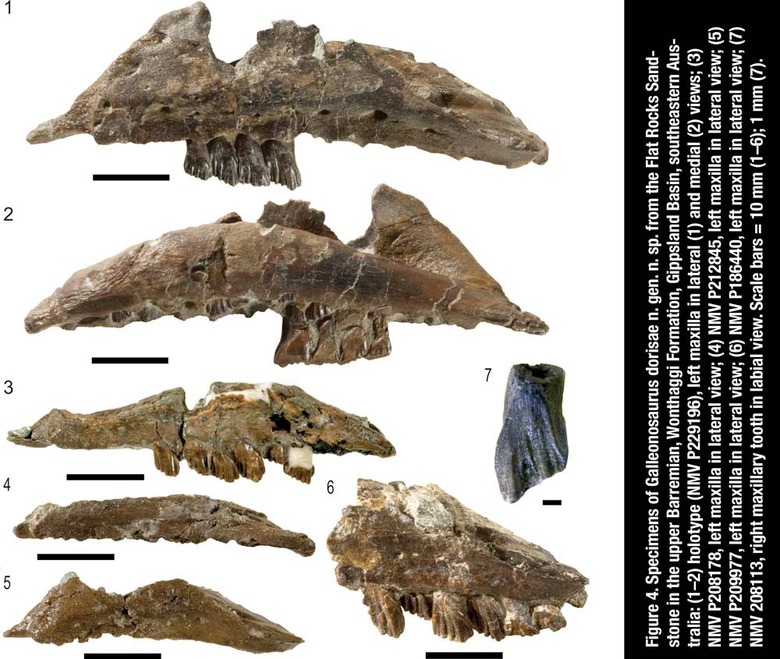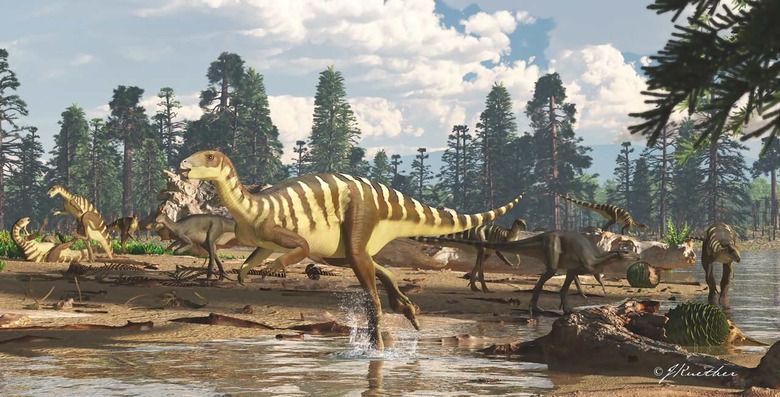New Land Dinosaur's Old Home Now Covered By Ocean
A new species of dinosaur was identified in research published this week. This dinosaur is called Galleonosaurus dorisae, and it's a small-bodied ornithopod. Identification of this dinosaur was focused on a set of jawbones recovered in the Southwestern region of Australia. This wallaby-sized creature was most likely living in the region that connected Australia and Antarctica before the one land mass was split into two.
The dinosaur we're talking about today was discovered in Australia. Several key fossils suggest there were quite a few of these creatures living in the area, and that the area between Australia and Antarctica was once its home. University of New England Postdoctoral fellow Dr Matt Herne was responsible for identifying the dinosaur.

The name of the dinosaur comes from the shape of the jawbones discovered on this specific dig. It was said that the dinosaur's jawbones looked like the upturned hull of a sailing ship (re: galleon). Above you'll see a set of photos of this dinosaur's jaws from this dig.
Dr Herne and his team discovered the fossils in Bunurong Marine National Park in the Gippsland region of Victoria. The body of water that now separates Australia and Antarctica likely contains more evidence that these creatures once lived in the area. Unfortunate for us, the water in the region means we stand far less a chance of knowing the full story left by the bones of this little baby dinosaur.
One positive part about this find specifically is the number of individuals identified. Five different individual Galleonosaurus dorisae were identified at several different age ranges. According to Dr Herne, this is "the first time an age range has been identified from the jaws of an Australian dinosaur."
In addition to these five jaws of the one dinosaur species, Galleonosaurus dorisae is the fifth small-bodied ornithopod dinosaur discovered in Victoria. According to the University of New England, this diversity of ornithopod is "not seen anywhere else in the world."

Another win for this find is the complexity and completeness of the knowledge presented. Per the U of NE, "this holotype of Galleonosaurus dorisae n. gen. n. sp. (NMV P229196) represents the most complete maxilla of a dinosaur currently known from Victoria."
The finding and naming of the dinosaur was dedicated to a colleague of Dr Herne's. That honor goes to Dr Doris Seegets-Villiers, whose PhD thesis was done based on the paleontology of the locality in which the dinosaur was found.
The illustration of this new dinosaur posted in this article was created by James Kuether. You've most likely seen this massively talented artist's works before, through papers, publications, and murals of several sorts.
If you'd like to learn more about this subject, head on over to the research paper entitled "New small-bodied ornithopods (Dinosauria, Neornithischia) from the Early Cretaceous Wonthaggi Formation (Strzelecki Group) of the Australian-Antarctic rift system, with revision of Qantassaurus intrepidus Rich and Vickers-Rich, 1999" with code DOI:10.1017/jpa.2018.95 in Cambridge CORE. The paper is published in the Cambridge Journal of Paleontology and authored by Matthew C. Herne, Jay P. Nair, Alistair R. Evans, and Alan M. Tait.
